McLaren Artura Is Greener, Keener than Its Predecessor
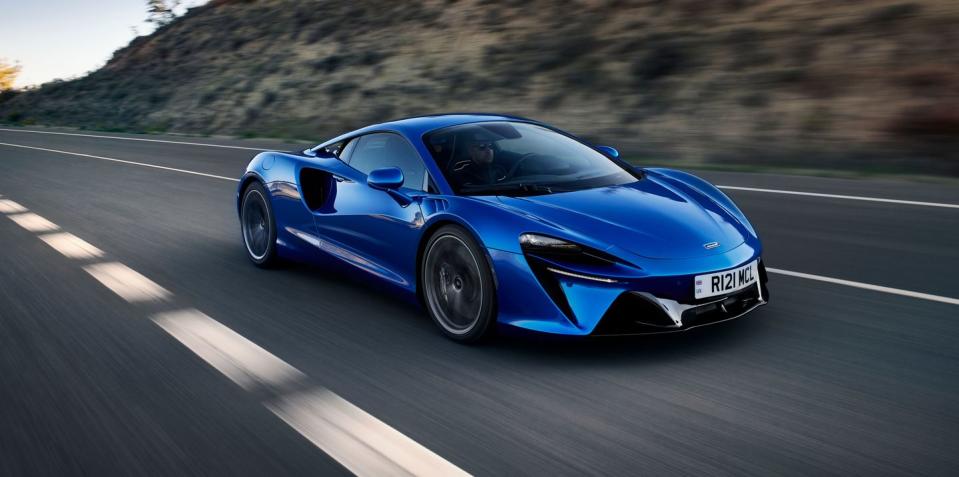
McLaren’s first PHEV makes 671 hp from electrically boosted 3.0-liter V6.
7.4-kWh battery delivers up to 19 miles of EV range.
The Artura is set to carry a $237,500 MSRP in the US.
Nobody likes to lose a race, especially one you were leading and looked set to win. We should have been telling you about the driving the McLaren Artura last October, but the media drive was cancelled just days before it was due to take place. McLaren blamed software issues for the embarrassing and doubtless costly delay—and the setback almost certainly played a part in the departure of CEO Mike Flewitt shortly afterward. Then, to add insult to injury, Ferrari beat McLaren to the line with its own V6-powered plug-in hybrid, the 296 GTB, relegating the Artura to runner-up in a segment it should have pioneered.
Eight months later it’s time for a second attempt, with the rearranged Artura press launch taking place in southern Spain, giving the chance to experience the car on some of Andalusia’s spectacular roads and the challenging Ascari driving resort racetrack. I’d love to tell you there were no signs of the software issues that caused the initial postponement, but I can’t.
My test car’s snazzy new user interface system shut down 15 seconds after I started driving it and had to be rebooted. It also failed to detect the presence in the cabin of its wireless key several times. Other journalists reported similar faults throughout the drive program. McLaren says the launch cars were all running non-finished software—begging the question, what have the company’s data engineers been doing the last eight months?—and that all will be fixed before customer deliveries begin later in the year.
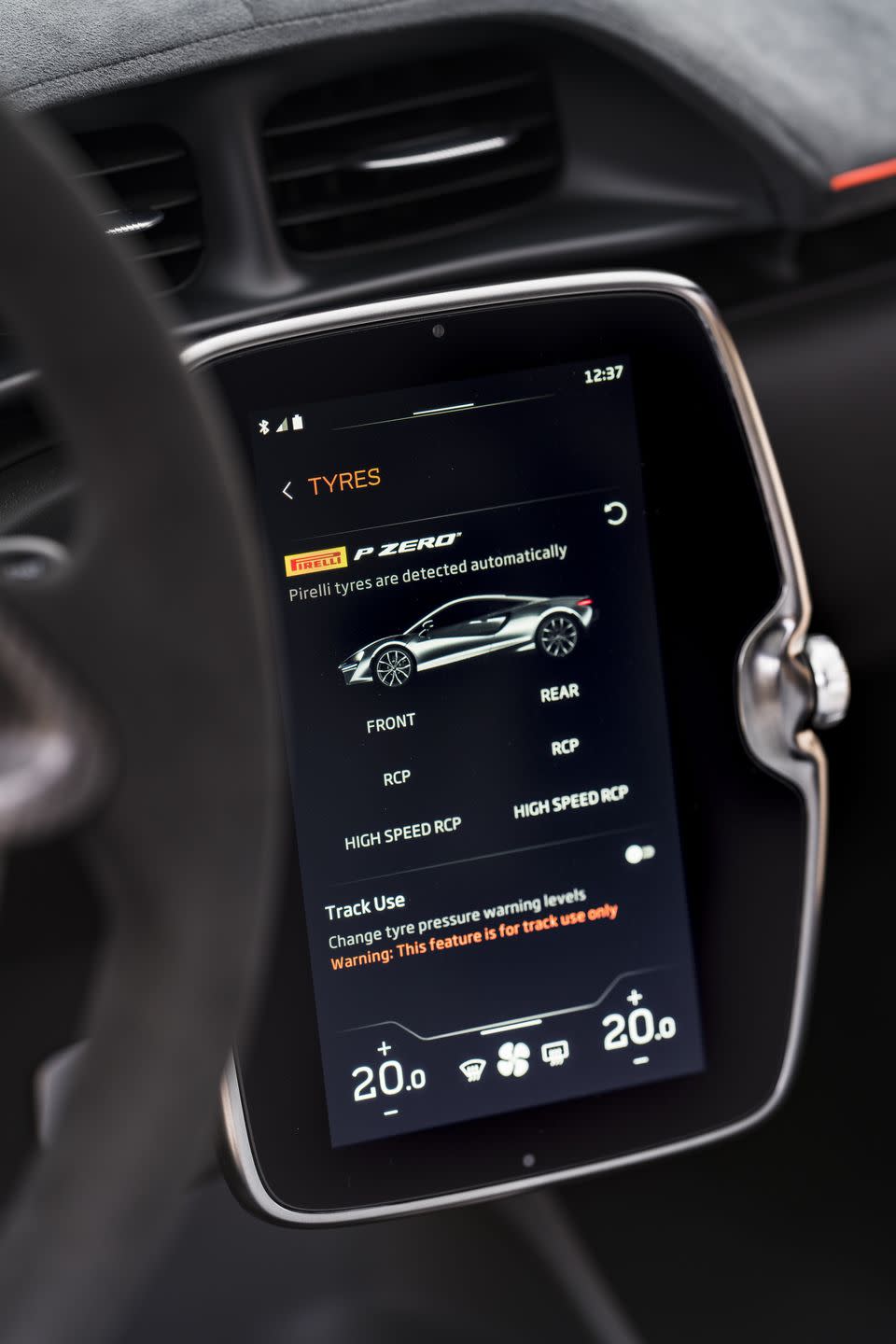
Glitches aside, the Artura is a huge, impressive car. It isn’t the first road-going McLaren to use a hybrid powertrain, with both the earlier P1 and Speedtail hypercars having their turbocharged V8s boosted by electric motors. But the Artura is the first McLaren able to run under pure electric power, defaulting to its EV mode whenever it gets started—this being a legal requirement in Europe for a car to be regarded as an electric vehicle—with an official e-range of up to 19 miles.
Pure electric propulsion delivers more novelty than performance: The 94-hp axial-flux motor is almost entirely silent when working by itself, but acceleration feels predictably modest when it is working by itself. Unlike many part-time EVs, the Artura doesn’t automatically start its combustion engine when the throttle is pressed beyond a certain point, requiring selection of one of the Powertrain selector’s punchier modes—these running through Hybrid, Sport and Track.
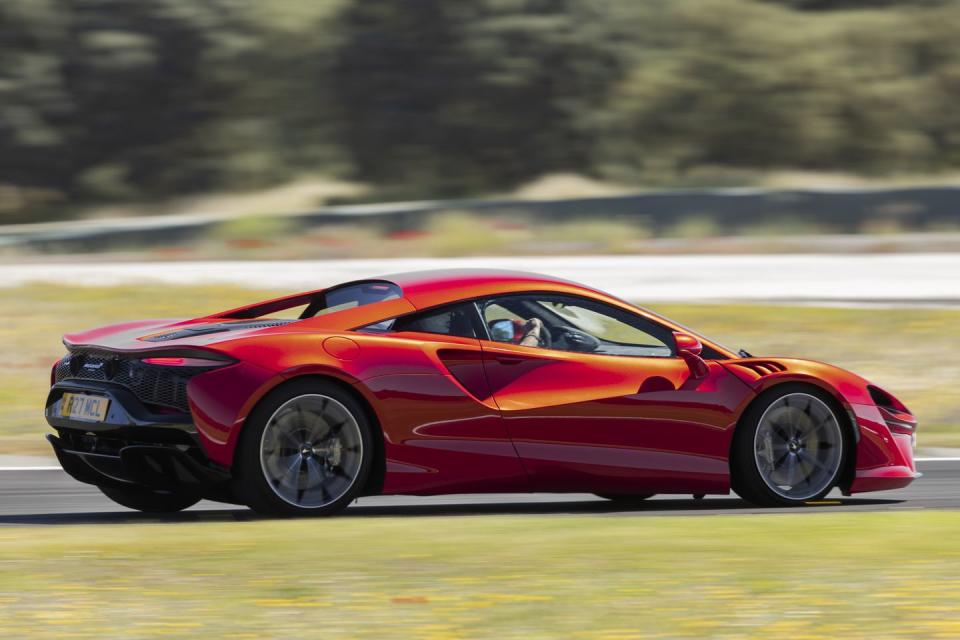
The Artura is rear-wheel drive and, because the electric motor is located between the combustion engine and the new eight-speed double-clutch transmission, it has to drive through the gearbox, giving the slightly strange sensation of the system changing ratios under electric power to ensure it is in the right gear if the V6 needs to fire up. The transition between EV running and blended propulsion isn’t always an elegant one, especially when requesting sudden thrust when the engine is off in Hybrid mode.
The new 3.0-liter V6 features a wide 120-degrees between its cylinder banks, revs to nearly 8000 rpm and makes 577 hp of the combined system peak of 671 hp—it will always be the powertrain’s majority partner. The engine sounds muted low down—under gentle use the Artura is undoubtedly the quietest and most refined McLaren, even with its combustion engine running.
There are some gravelly induction harmonics under small throttle openings, but there are none of the pops and gurgles on a lifted gas pedal that supercar owners often hear. The combination of gasoline particulate filters in the exhaust and tougher European drive-by regulations are partially responsible for this. US cars without GPFs will likely get to breathe more freely.
The new motor finds a harder aural edge as revs build, one that demonstrates enthusiasm through quantity of noise rather than quality—it gets loud, but never especially compelling. Anyone holding the belief there has never been a great-sounding non-Italian V6 is unlikely to have their opinions shifted by this one.
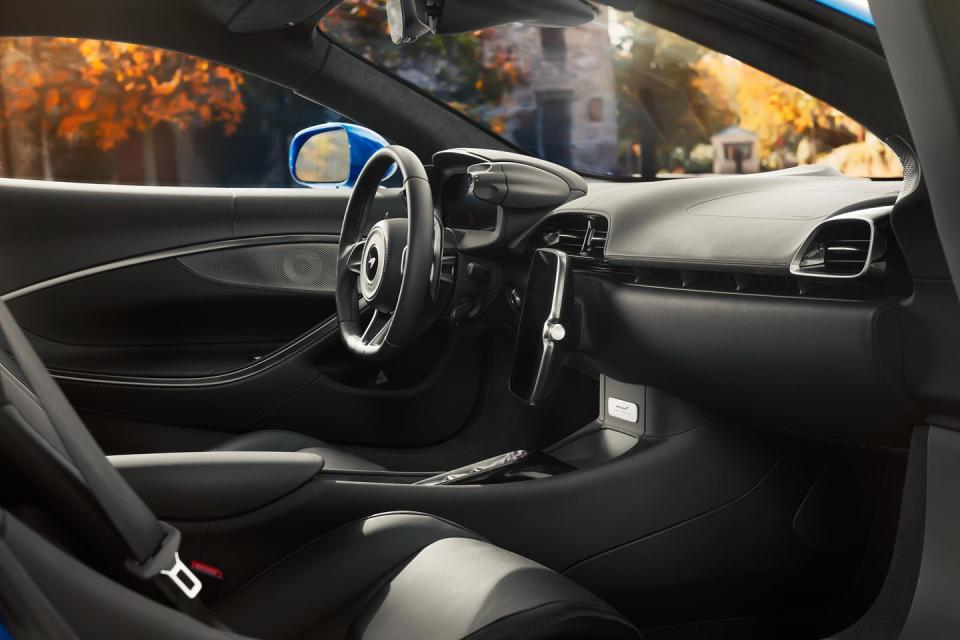
Yet it is savagely fast. The Artura sits on a new, carbon-fiber architecture that’s even lighter than other McLaren’s, and although the 194-pound mass of its 7.4-kWh battery pack means it is heavier than the old V8-powered 570S—weighing 3303 pounds according to McLaren—the hybrid powerplant has no difficulty in delivering adjective-snapping performance.
At lower engine speeds the electric motor can deliver torque as the turbos build boost, and although there is still a very slight hint of lag if you look for it, the overwhelming impression is of huge, linear thrust throughout the rev range. McLaren’s otherworldy claims of a 3.0-second 0-60 mph time and an 8.3-second sprint to 124 mph indicate just how potent it is. Like a superbike, full throttle will only ever be experienced fleetingly on road.
Surprisingly for any hybrid, the Artura doesn’t have regenerative braking. Company engineers say this is because of the challenge of seamlessly integrating retardation from the Artura’s standard carbon-ceramic discs with energy harvested through the motor—although Ferrari has indeed managed this with the 296 GTB’s similar powertrain configuration. Instead, the McLaren’s battery is recharged directly from the engine, when it is running at part load in Hybrid and Sport modes, and by continuing to run the engine during braking in the most aggressive Track setting.
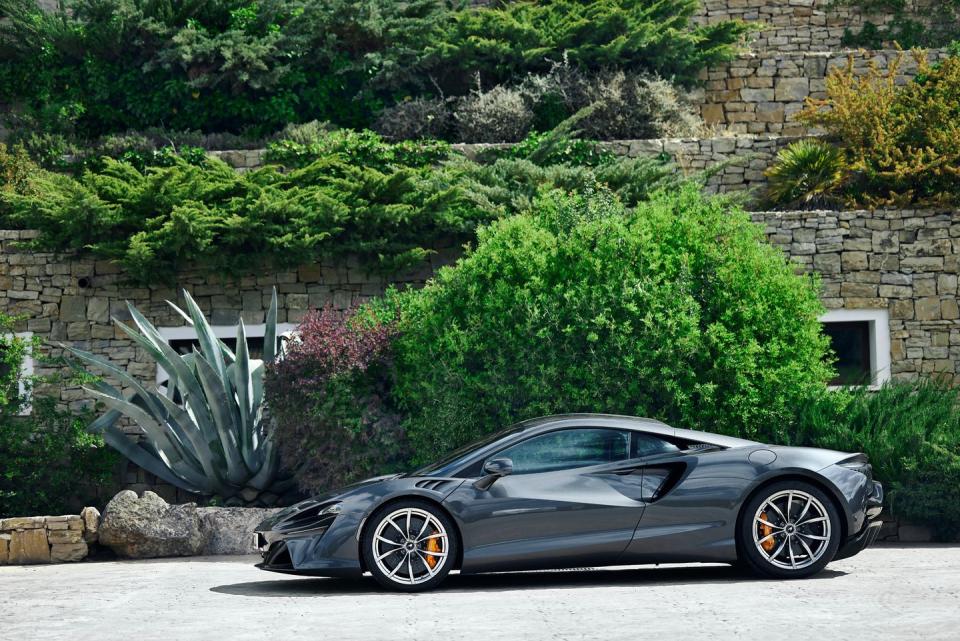
The result is an impressively solid and consistent feeling brake pedal, even when dealing with the huge disc and pad temperatures quickly generated by harder use. But the intensity at which the engine has to work for faster progress is evident whenever the car stops, with a heat haze visible in the rearview mirror from the cooling ‘chimney’ that extracts hot air from the engine compartment.
Steering is similarly uncorrupted by electrification, with Artura using a hydraulically assisted rack in the interest of dynamic purity. Grip is huge and the Artura feels incredibly stable in high-speed turns on both road and track, and the steering weights up progressively as lock is added. Yet the Artura’s handling balance feels more front-biased than that of earlier McLarens, certainly with the chassis loadings that can be generated on road (a new electronically controlled differential at the rear helps deliver more assured traction).
It feels less edgy than its predecessors, but also a little less exciting, and that’s true even at much higher speeds on the track. (Although, for those brave enough to engage it, it features the Variable Drift Control system from the 720S.) There is certainly plenty of headroom for the inevitable faster and more focused variants that will follow to add more thrills.
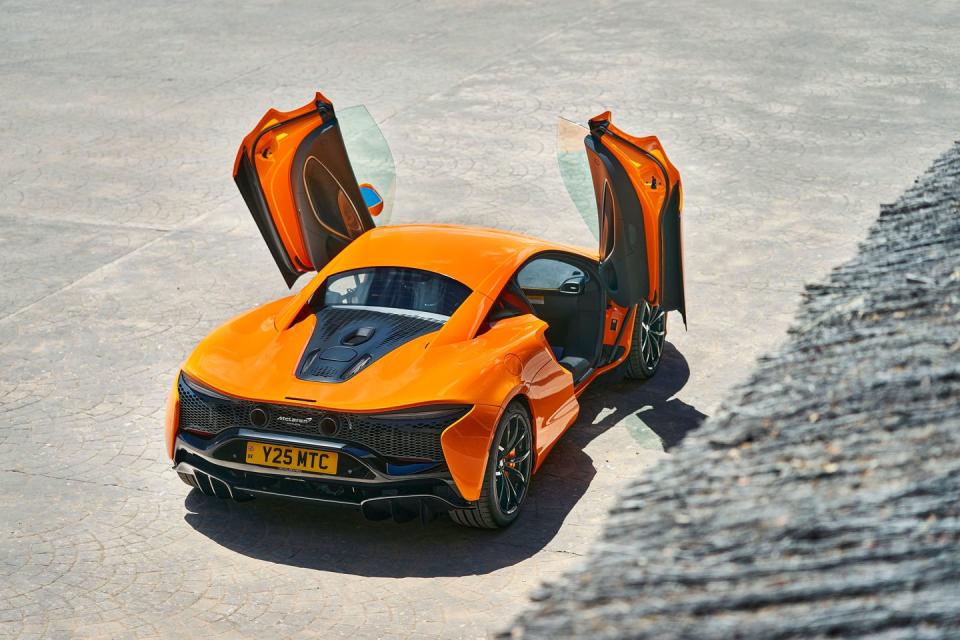
Another sign of increased maturity is the Artura’s impressive ride quality. With the adaptive chassis in its softest Comfort mode, it out-GTs the McLaren GT, which sits below it in the corporate lineup, absorbing bumps at big speeds without complaint or any sense of secondary motions. Even selecting the firmer Sport or Track modes doesn’t turn it harsh over undulations. A front lift system will be fitted as standard to keep the nose clear of speed bumps at low speed, although the control to activate this is awkwardly located in a panel of other similar looking buttons.
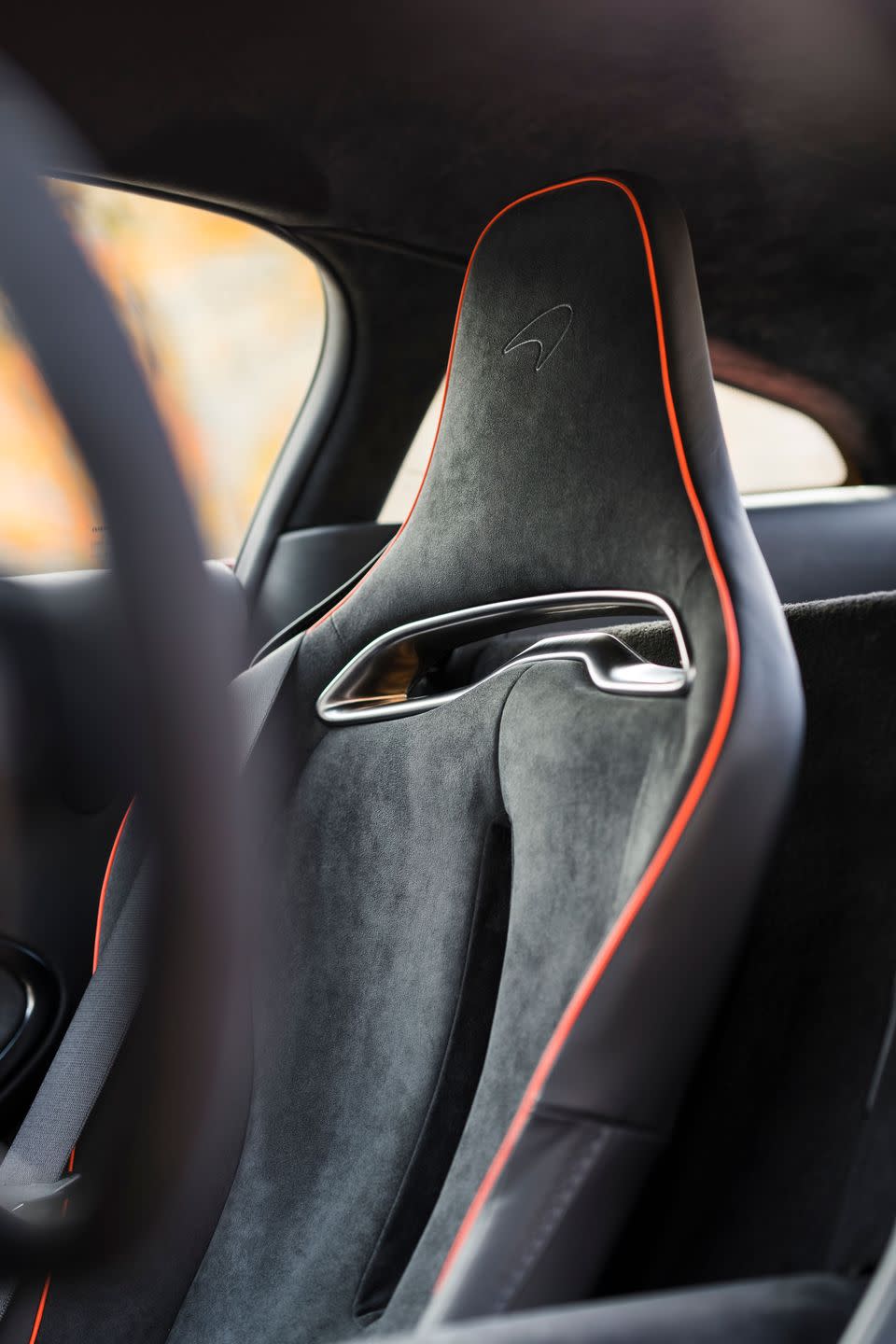
The Artura’s interior also feels like a step up from McLaren’s earlier cars. It is still a struggle to get in and out past the gullwing-opening doors, although most buyers will doubtless be happy to sacrifice practicality for theatre. But the cabin is well finished, spacious by the standards of two-seat supercars and a comfortable place to spend time. When working, the Android-based user interface is intuitive to operate and, although surrounded by a very thick binnacle, the 10.2-inch portrait-orientated central touchscreen looks good.
The Artura is set to carry a $237,500 MSRP in the US, and McLaren now offers three years of complimentary servicing and the reassurance of a five-year, 45,000-mile warranty. Let’s hope the finished car’s cured software problems mean owners won’t need to call on that too often.

 Yahoo Autos
Yahoo Autos 